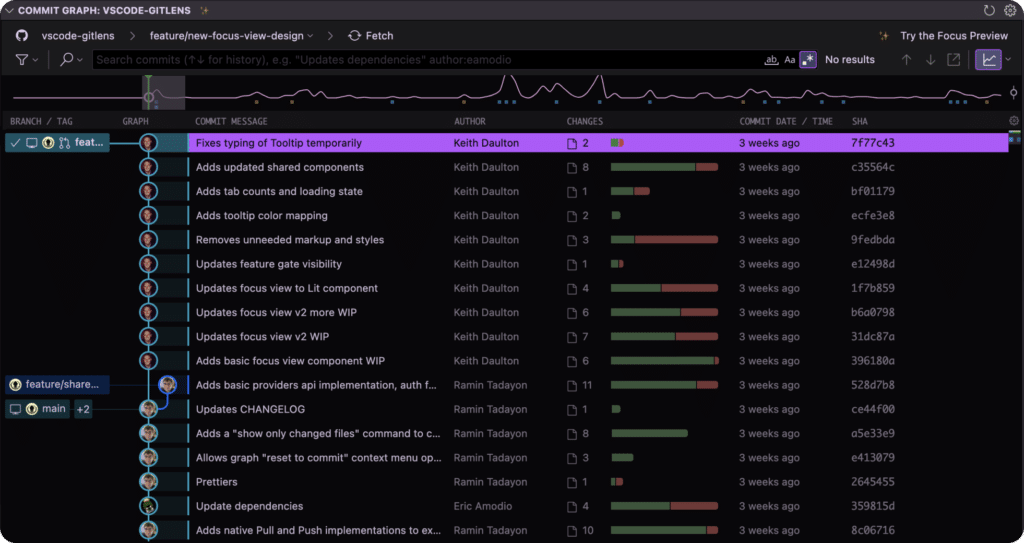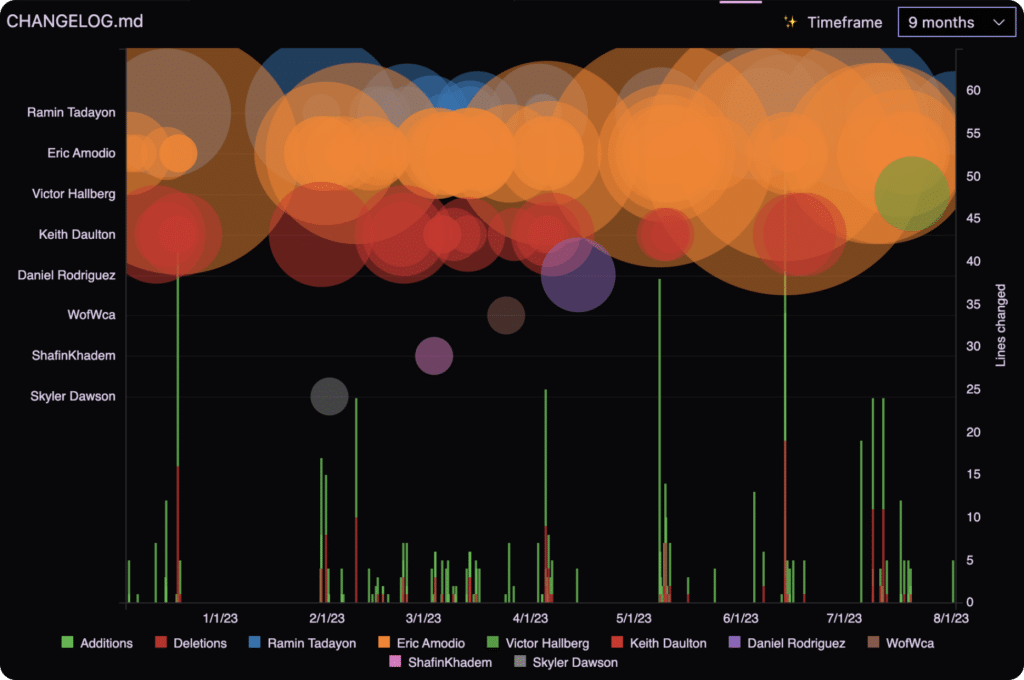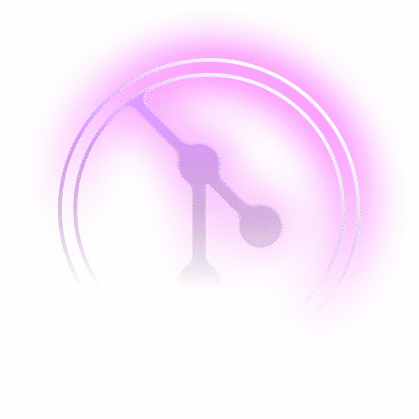
X
Your team can experience GitKraken Desktop On-Premise with all of its features, plus onboarding & support, 100% free of charge. We’re here to answer any questions about the product or pricing. In the meantime, we’ll create a trial license key and send you the details so you can take it for a test drive.

- Onboarding: New team members were slowed down by a lack of context in which repositories to work with and understanding changes to existing code
- Reporting: Project managers were spending excessive time assembling reports on development time spent on new features vs. maintaining existing product
- Developer Experience: Team wanted to foster collaboration to make it easier for their distributed dev team to work more cohesively, and move faster
- As a pilot, a 5-person team of devs incorporated GitKraken Desktop, GitLens, Git Integration for Jira, and Signals for Jira into their workflows for a month
- Improved team collaboration and reduced time needed to get up to speed on new code
- Used top-down and bottom-up metrics to improve development workflows and eliminate labor-intensive data gathering
- Adopted all 4 products, making it available to their entire team
Customer
Superna
Location
Ontario, Canada with additional dev team in Spain
Industry
Hardware & Software Technology
Solutions
GitKraken Desktop, GitLens, Git Integration for Jira, Signals
Employees
100
Superna is an industry leader in managing, protecting and securing unstructured data across any hybrid cloud environment. With global operations and thousands of customers across all verticals, Superna delivers a scalable, secure and easy to orchestrate platform to secure data wherever it lives.
With over 4 Exabytes under management, Superna’s product and development teams are tasked with ensuring their platform is as performant and secure as possible.
Where some case studies start with a project that went poorly or a big challenge to overcome, this one starts with a quest for efficiency and making life easier for developers, product managers, and project managers.
For Kyle Fransham, VP, Research and Development at Superna, keeping the company’s dev and product teams happy is a big contributor to its success. Kyle identified areas of their workflows that were pain points – individuals working on new code bases, onboarding new devs, pulling data on the types of work devs were focused on – and focused on how he could help alleviate those pains.
Kyle was a user of GitKraken tools like GitLens, and also knew of a few developers using them on their own as well. That prompted a thought – if he and other developers were seeing value with individual tools, what if they took a more cohesive approach? What if they made the GitKraken tool suite more widely available across the team?
“I assess the value of a tool by how often you choose to use it in your workflows, and how often you choose not to,” said Fransham.
With that in mind, he signed up for a 28-day organization trial of all 3 GitKraken products – GitKraken Desktop, GitLens, and Git Integration for Jira. This gave Kyle and his team a month to decide if it made sense to subscribe and roll out the tools to the entire dev and product teams.
“Success metrics, for me, need to measure how many members of the organization want to use it. That doesn’t mean everyone has to use it, but it’s certainly an indicator,” Fransham noted.
To start the evaluation process, Kyle and 5 other volunteers incorporated the tools into their workflows and would report back on if life got easier, stayed the same, or got worse.
As a manager focused on the bigger picture, Workspaces immediately jumped out to Kyle.
“I’m not eyeballs deep in the code anymore. But the thing I love in GitKraken Desktop is Workspaces.” said Fransham. “I can absolutely see the value, especially in onboarding. Join this workspace and clone it, and then it’s all there.”
With GitKraken Workspaces, you can quickly onboard new team members by giving them 1 place to easily clone all their repos. Adding new team members to a shared Workspace provides all the context they need to dive into their work and start collaborating with the team.
In addition, by providing visibility on pull requests and issues for all repositories in their Workspace, GitKraken’s Team View helps developers prioritize their tasks and see what needs immediate attention. Open repos. Open issues. Or checkout branches right from the Workspace.

As VS Code users, Kyle saw further value in Workspaces. “My workflow is often ‘something is happening at a customer site, there’s a log message, where is that coming from and why?’ So I know what line of the code that is, but if I can just open it up and have all the repos there – it’s really nice to have that shortcut. The open all in VS Code workspace button has personally made an impact for me.”
“It also highlights what’s old and makes me understand, for example, there’s pull requests that are 8 months old and makes me question why they are there. It enforces good hygiene,” he added.
Developers highlighted multiple areas of GitKraken Desktop that stood out to them vs. what they were using before.
“I really love the Diff function, it’s the easiest view I’ve seen so far in all of the Git tools. I use the split view every day.” Said Sheldon Wang, Software Developer.
Others loved the fact that the interface made it much easier to visualize what’s going on in their repositories.
“I really like the Commit Graph. It helps when I’m working on an issue that might have a lot of questions. It’s easy to debug and browse through the commits, which saves me so much time,” said Neel Patel, Software Developer.
“The interface is really good, visually I can see a lot more than just the basic VS Code view,” added Andy Lin, Software Developer.
While Superna is already tracking development metrics, they weren’t available in the bottom-up developer-centric way they’re presented in GitKraken Desktop. GitKraken Insights shows developers their personal metrics – helping them track their performance on things like time to merge.

“I like having it broken down here this way. Project Management has an enormous dashboard to track these things, but it’s great having it in this view for individual developers and teams to see.” Said Kyle.
With developers spending most of their time in VS Code, adding GitLens was an immediate hit with the trial users. With inline blame, developers appreciated the ease in which they could see the history of a line of code and why it changed.
“I think it’s an amazing product, I like everything about it, it’s a life saver. It’s made a huge difference,” said Andy. “Especially when you join a company, everything is new, the code is new. If I see a block of code I don’t understand or I’m not sure what it’s doing you can look at the whole commit. So all the dependencies are showing the one commit and you can open it up. Basically, you can understand why it’s there – it’s really made a difference for me.”

“The workflow I have with GitLens solves pretty much all my problems. I can’t imagine working without it – it would be really difficult,” added Neel. “It helps tremendously when I want to see changes that were made on a line – I just open the commit on Bitbucket and it helps every day.”
The Commit Graph and Visual File History was also a major help.
“The people who really need this are the maintainers,” said Kyle, who went on to describe their repository structure. “Everything gets put into the develop branch, the trunk, and we branch off of that. If there’s any hotfixes that have to get pulled off the trunk onto the release branch so we can ship it, they’re doing that. So the file history is very useful to them.”

One final pain point that was alleviated was dealing with merge conflicts.
“For me, that happens all the time. And being honest – I wish it didn’t,” said Kyle. “There’s times where it’s like ‘how did that code get committed?’ or ‘where did that code come from?’. GitLens is by far the easiest way to just get in there and figure it out.”

Superna’s development tasks are created in Jira and then assigned to developers. Prior to using Git Integration for Jira, they were using the free out-of-the-box Bitbucket connector. This provided a small glimpse into development activity, and it was only available from the Jira issue view.
Git Integration for Jira made life easier for developers. They created branches and pull requests directly from the Jira issue view. And with deep links to GitKraken Desktop and GitLens, they were able to easily switch between surfaces without losing context of the issue or code.
Product managers and dev team leads took advantage of the Repository Browser (for comparing branches and tags to see a diff of issues) and the Git Commits page (to see a chronological list and details of all commits made within a Jira project). This allowed them to view and analyze development activity across multiple issues at the same time – saving time and helping them understand what work needs to be followed up on.
For Kyle, one point of opportunity was understanding plan vs. reality. Did the original plan go as desired? What changed or missed? Why? While their free Bitbucket connector let them see development activity on an individual issue basis, it didn’t allow them to zoom out and get the bigger picture.
“We couldn’t easily track how things changed. For instance, here’s our initial plan and here’s how it actually ended up. And mapping those two, there’s total value in doing that exercise.”
Now with Signals, Kyle and the product teams get a timeline activity view across entire projects, epics, and sprints. It allows them to track how work is progressing to plan based on actual user activity – not just issue status (and adapt as necessary). It also provides clarity into what the team is working on vs. what the plan called for.

“Staying closer to plan is something we’re getting better at, and Signals definitely helps,” added Fransham.
Further, it was easy to identify issues that were stagnant – seeing they reverted in status or had lots of discussion (e.g. comments) before and during development. “The cause is often churn in requirements,”he said. “If you don’t have concrete requirements up front, it’s tough to execute properly.”
the best solution for your needs with GitKraken Desktop Enterprise.
Once epics are completed, it’s necessary for the team to report back to finance on where developers’ time was focused. While this seems like a fairly basic ask, it was taking project managers an entire day to pull the data – every time.
“We need to provide Finance with an epic-level view of whether this is a) new work or b) maintenance work on existing product,” said Kyle. He went on to describe the challenge in reporting this on a developer-by-developer basis. “We need to see that this particular contributor worked on these particular epics – what fraction of their time they worked on new stuff vs. maintenance stuff.”
The problem is that there was no easy way to generate that type of report in Jira.
“Previously the process was to switch all the tasks from Jira to smart sheet to gantt chart to smart sheet again. Manually, I had to go one project at time and it was multiple smart sheets,” said Tian Gan, the project manager responsible for pulling and reporting on this data. “It was taking me basically an entire 8-hour day.”
Signals answered that question – by filtering on an individual, project managers can quickly see which epics and tasks they worked on.
“With Signals, I press a couple of buttons and get to the data I need in 30 minutes, instead of spending an entire day,” said Jian.
While Superna uses this for financial reporting requirements, the same process can also be used to see the full workload of any Jira user. Are they overburdened? Are they working on issues outside of the critical path? Are they contributing to other issues that they’re not assigned to?
After a month of access to all the GitKraken tools, Kyle had to assess – did developers use them? Did they want to tell their teammates about them? What would happen if they took the tools away?
The results – everyone had an affinity for 1 or more tools, and the value to the team was clear. Kyle made the decision to subscribe to all 3 tools and expand their availability to the broader teams.
Kyle reflected on some of the feedback he heard from developers. Andy and Neel both commented on onboarding for new developers – understanding the ‘lay of the land’ and where code came from.
“Onboarding is always a good consideration when assessing value,” said Kyle. “It’s good to hear that from Andy and Neel – it’s not something I would have thought of myself.”
Speed was also a major point of consideration that came up for the developers. Kyle shared how he assessed the value of tools like GitLens and GitKraken Desktop. “Always thinking in terms of velocity or time spent exploring a code base without it or with it,” remarked Kyle. “Time spent to get started on a larger task that requires a little bit of code investigation before starting. That’s a good metric.”
“You can also tie the value into avoiding rework. It helps you better understand what you’re doing vs. what was there before,” he continued. “You know who to ask, since you can actually see the commit, instead of asking your manager, or talking to all of your teammates. Going directly to the person that made the commit has a positive impact in terms of velocity, engagement, and happiness.”
The trial users felt the GitKraken tools made development more of a team sport. Each tool made it easier for them to work better together, collaborate, and get better visibility into each other’s work.
“It does really help,” said Andy. “For instance, when making a pull request we have to pick reviewers. If I make a change to a block of code I can see who originally created it and I can make them the reviewer since they’ll have an understanding of the impact and will be the best reviewer.”
“Personally, I see that it enables us to work better as a team.” Said Kyle.
As more team members get familiar with the tools, Superna is continuing to see strong adoption among their developers and other stakeholders. As Kyle said – watch how many people choose to incorporate a tool into their workflows. That will show you if it’s valuable or not.



 GitKraken MCP
GitKraken MCP GitKraken Insights
GitKraken Insights Dev Team Automations
Dev Team Automations AI & Security Controls
AI & Security Controls